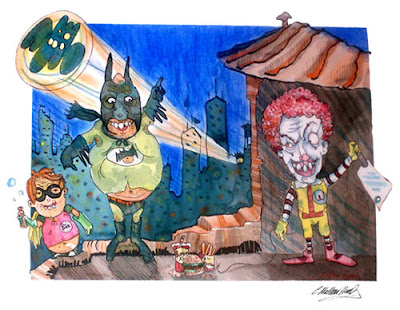new posts in all blogs
Viewing: Blog Posts Tagged with: matthew, Most Recent at Top [Help]
Results 1 - 12 of 12
How to use this Page
You are viewing the most recent posts tagged with the words: matthew in the JacketFlap blog reader. What is a tag? Think of a tag as a keyword or category label. Tags can both help you find posts on JacketFlap.com as well as provide an easy way for you to "remember" and classify posts for later recall. Try adding a tag yourself by clicking "Add a tag" below a post's header. Scroll down through the list of Recent Posts in the left column and click on a post title that sounds interesting. You can view all posts from a specific blog by clicking the Blog name in the right column, or you can click a 'More Posts from this Blog' link in any individual post.

By: DanP,
on 7/10/2014
Blog:
OUPblog
(
Login to Add to MyJacketFlap)
JacketFlap tags:
Books,
Law,
Videos,
legislation,
Current Affairs,
freedom of expression,
Multimedia,
rights,
melbourne,
collins,
matthew,
confidentiality,
defamation,
*Featured,
individual rights,
defamation law,
Collins on Defamation,
defamation sct 2013,
dr matthew collins,
Lord Neuberger,
neuberger,
vkudax8dvog,
y4qx9ln0bde,
abbotsbury,
Add a tag
Freedom of expression is a central tenet of almost every modern society. This freedom however often comes into conflict with other rights, and can be misused and exploited. New media – especially on the internet – and new forms of media intrusion bring added complexity to old tensions between the individual’s rights to reputation and privacy on the one hand, and freedom of expression and the freedom of the press on the other.
How should free speech be balanced with the right to reputation? This question lies at the heart of defamation law. In the following videos, Lord Neuberger and Dr Matthew Collins QC discuss current challenges in defamation law, and the implications of recent changes to legislation enacted in the Defamation Act 2013. Lord Neuberger highlights urgent issues including privacy, confidentiality, data protection, freedom of information, and the Internet.
In this video, he draws attention to recent high-profile events such as the Leveson Inquiry and the phone-hacking trials, and points up key features of the new legislation.
Click here to view the embedded video.
Dr Matthew Collins QC outlines his perspective on the likely long-term impact of the 2013 Act.
Click here to view the embedded video.
The Rt Hon the Lord Neuberger of Abbotsbury Kt PC is President of the Supreme Court of the United Court of the United Kingdom. Dr Matthew Collins QC is a barrister based in Melbourne, Australia. He is also a Senior Fellow at the University of Melbourne, a door tenant at One Brick Court chambers in London, and the author of Collins on Defamation.
Subscribe to the OUPblog via
email or
RSS.
Subscribe to only law articles on the OUPblog via
email or
RSS.
The post Free speech, reputation, and the Defamation Act 2013 appeared first on OUPblog.


By: AlanaP,
on 12/22/2012
Blog:
OUPblog
(
Login to Add to MyJacketFlap)
JacketFlap tags:
new testatment,
Marc Z. Brettler,
Peter Enns,
luke wrote,
luke’s,
traditions—jewish,
Bible and the Believer,
brettler,
Daniel J. Harrington,
enns,
harrington,
historical biblical context,
How to Read the Bible Critically and Religiously,
Mark,
matthew,
Christmas,
Religion,
bible,
John,
jesus,
luke,
Humanities,
bethlehem,
*Featured,
Add a tag
By Daniel J. Harrington, S.J.
The New Testament contains two Christmas stories, not one. They appear in Matthew 1–2 and Luke 1–2. They have some points in common. But there are many differences in their characters, plot, messages, and tone.
In the familiar version of the Christmas story, Mary and Joseph travel from Nazareth to Bethlehem. Because there was no room in the inn, the baby Jesus is born in a stable and placed in a manger. His humble birth is celebrated by choirs of angels and shepherds, and he is given precious gifts by the mysterious Magi. This version freely blends material from the two biblical accounts. It has become enshrined in Christmas carols and stable scenes as well as the liturgical cycle of readings during the Christmas season.
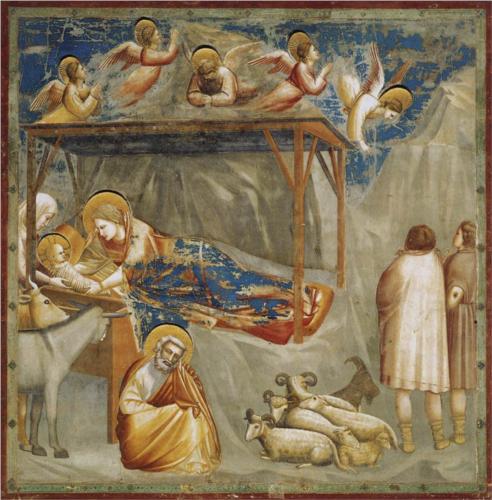
Giotto’s “Nativity, Birth of Jesus” from Scrovegni (Arena) Chapel, Padua, Italy c. 1304-1306.
My purpose here is not to criticize blending the two Christmas stories or to debate the historicity of the events they describe. What I do want to show is that by harmonizing the two stories we may be missing points that were especially important for Matthew and Luke, respectively. I want also to suggest that appreciating each biblical account separately might open up new perspectives on the infancy narratives for people today.
In The Bible and the Believer: How to Read the Bible Critically and Religiously, Marc Z. Brettler, Peter Enns, and I explore how each of our religious traditions—Jewish, Evangelical, and Catholic—tries to bring together the modern historical-critical reading of the Bible and contemporary religious faith and practice. There are, of course, many differences among us. But there are some principles we hold in common: the value of reading biblical texts in their original historical settings, the need for careful analysis of the literary dimensions of each text, and respect for what seems to have been the intentions of the original author. Applying these principles to the two Christmas stories in the New Testament will reveal more clearly their historical significance, distinctive literary character, and theological riches.
Matthew wrote his Gospel in the late first century CE, perhaps in Antioch of Syria. He was a Jewish Christian writing primarily for other Jewish Christians. He wanted to show that the legacy of biblical Israel was best fulfilled in the community formed around the memory of Jesus of Nazareth. Now that the Jerusalem temple had been destroyed and Roman control over Jews was even tighter, all Jews had to face the question: how is the heritage of Israel as God’s people to be carried on? Matthew’s answer lay in stressing the Jewishness of Jesus.
This setting helps to explain why Matthew told his Christmas story as he did. He begins with a genealogy that relates Jesus to Abraham and David, while including several women of dubious reputation who nonetheless highlight the new thing God was doing in Jesus. Next, he explains how the virginal conception of Jesus through the Holy Spirit fulfilled Isaiah’s prophecy (7:14), and how Jesus the Son of God became the legal Son of David through Joseph. Besides Jesus, Joseph is the main character in Mathew’s Christmas story. Guided by dreams like his biblical namesake, he is the divinely designated protector of Mary and her child Jesus.
The Magi story in Matthew 2 is part of a larger sequence that involves danger for the newborn child and his parents. When King Herod hears about the child “King of the Jews” as a potential rival for his power, he seeks to have Jesus killed. As a result the family flees to Egypt, while Herod orders the execution of all boys under two years old in the area of Bethlehem. Only after Herod’s death does the family return to the Land of Israel, though to Nazareth rather than Bethlehem. At each point in their itinerary, the family is guided by dreams and texts from the Jewish Scriptures.
In his Christmas story Matthew wants us to learn who Jesus is (Son of Abraham, Son of David, Son of God) and how he got from Bethlehem to Nazareth. Thus he establishes the Jewish identity of Jesus, while foreshadowing the mystery of the cross and the inclusion of non-Jews in the church. The tone is serious, somber, and foreboding.
Luke wrote his Gospel about the same time as Matthew did (but independently), in the late first century CE. He composed two volumes, one about Jesus’ life and death (Luke’s Gospel), and the other about the spread of Christianity from Jerusalem to Rome (Acts of the Apostles). The dynamic of the two books is captured by words now in Luke 2:32 taken from Isaiah (42:6; 46:13; 49:6): “a light for revelation to the Gentiles [Acts], and for glory to your people Israel [the Gospel].”
While in his prologue (1:1-4), Luke shows himself to be a master of classical Greek, in his infancy narrative he shifts into “Bible Greek,” in the style of the narrative books of the Old Testament in their Greek translations. Also there are many characters besides Jesus: Zechariah and Elizabeth, John the Baptist, Mary, and Simeon and Anna, as well as various angels and shepherds. These figures represent the best in Jewish piety. Thus Luke creates an ideal picture of the Israel into which Jesus is born.
In the gross structure of his infancy narrative, Luke seems intent on comparing John the Baptist and Jesus. His point is that while John is great, Jesus is even greater. So the announcement of John’s birth as the forerunner of the Messiah is balanced by the announcement of Jesus’ birth as the Son of the Most High (1:5-25; 1:26-56). And so the account of John’s birth and naming is balanced by the birth and naming of Jesus as Savior, Messiah, and Lord (1:57-80; 2:1-40).
Luke portrays Jesus and his family as observant with regard to Jewish laws and customs. At the same time, there are subtle “digs” at the Roman emperor and his clams to divinity. The narratives are punctuated by triumphant songs of joy. They are well known by their traditional Latin titles: Magnificat (1:46-46), Benedictus (1:68-79), and Nunc dimittis (2:29-32). These are pastiches of words and phrases from Israel’s Scriptures, and they serve to praise the God of Israel for what he was doing in and through Jesus.
With his infancy narrative, Luke wants to root Jesus in the best of Israelite piety, while hinting at Jesus’ significance for all the peoples of the world. That is why Luke’s genealogy of Jesus (3:23-38) goes back beyond Abraham all the way to Adam. Luke’s infancy narrative has provided the framework for the traditional “Christian story.” Its tone is upbeat, celebratory, and even romantic.
I have shown one way to read the Christmas stories of Matthew and Luke. It is a way that respects their historical contexts, literary skills, and intentions. It is not the only way. Indeed, during this Christmas season I will be celebrating (God willing) the traditional Christmas story in the two parishes in which I serve regularly as a Catholic priest. What I hope to have shown here is that there is more to the biblical Christmas stories than gets included in the traditional account.
Daniel J. Harrington, S.J., is professor of New Testament at Boston College School of Theology and Ministry, and co-author (with Marc Z. Brettler and Peter Enns) of The Bible and the Believer: How to Read the Bible Critically and Religiously.
Subscribe to the OUPblog via email or RSS.
Subscribe to only religion articles on the OUPblog via email or RSS.
The post Two Christmas stories: An analysis of New Testament narratives appeared first on OUPblog.


In an emotional vigil in Newtown, Connecticut, President Barack Obama spoke about the tragedy that occurred in that community last week.
In his speech, the President quoted three passages from the Bible. Obama concluded with Matthew 19:14: “Let the little children come to me and do not hinder them — for to such belongs the kingdom of heaven.”
You can read a transcript of Obama’s speech online or watch the video below. If you want to see the passages in context, we’ve linked to English Standard Version of the Bible for the individual quotes.
continued…
New Career Opportunities Daily: The best jobs in media.
 Almost everyone has had a moment where they realize what a small spot in the universe they actually hold.
Almost everyone has had a moment where they realize what a small spot in the universe they actually hold.
For some people, that’s a relief. There’s much less pressure. For other people, that realization inspires them to work harder to try and leave their mark, no matter how small.
For the little boy in Light Up the Night (Hyperion Children’s Books, 2011) — a picture book written by Jean Reidy and illustrated by Margaret Chodos-Irvine — that realization is part of an amazing trip throughout space.
But the boy doesn’t leave everything behind. His favorite blanket turns into a rocket to take him on his journey and bring him safely home.
Now, let’s meet Matthew, today’s guest reviewer. He says he would be very interested in going into space, seeing the entire world from above, and possibly meeting some aliens.
Take it away, Matthew!
Our reviewer: Matthew
Age: 7
Things I like to do: Use the computer, play on the iPod, draw and read.
This book was about: Stuff inside of stuff, inside of stuff, inside of stuff. (Editor’s note: This is a great way of describing a cumulative story, which this book is!)
The best part was when: The boy saw the planets and the sun.
This book taught me: About hemispheres.
My favorite words or phrase from the book: “Stars so bright they light up the night in my own little piece of the universe.”
My favorite picture from the book: When the blanket turnes into a rocket!
Three words that best describe this book are: “Space.” “Repeating.” “Night.”
Other kids reading this book should watch for: The aliens with all the eyes.
You should read this book because: It’s interesting.
Thank you, Matthew!
Want to learn more about Jean Reidy?
Let’s not forget illustrator Margaret Chodos-Irvine.
You might or might not have seen this lovely show that my friends Matthew and Tim did with Duckie at the Barbican - have a look. Have you ever seen a sleepover show? I wish I could sleep in a theatre every night.
We
featured artist Matthew Hamby back in April of 2010. Since that time Matthew has created a new Facebook Page. Jump on over and check him out when you get a chance.

By: Lauren,
on 5/24/2011
Blog:
OUPblog
(
Login to Add to MyJacketFlap)
JacketFlap tags:
*Featured,
the pale king,
Matthew Gallaway,
The Metropolis Case,
gallaway,
Seth Colter Walls,
word for word,
30pm,
avenues,
hagar’s,
overusing,
45pm,
free books,
blog,
Literature,
Current Events,
New York City,
book club,
Leisure,
matthew,
Reading Room,
bryant,
Bryant Park,
Add a tag
Have you heard the Word…for Word? Oxford University Press is proud to partner with the Bryant Park Reading Room in support of the Word for Word Book Club. The series kicks off today, with six more Clubs scheduled throughout the summer. Be sure to stop by the Reading Room early for a FREE* copy of the book club selections.
The Bryant Park Blog posed to following questions to resident OUP Law Editor and acclaimed novelist Matthew Gallaway, author of The Metropolis Case, who will lead today’s Word for Word Book Club, along with Seth Colter Walls. This first discussion of the season will focus on The Pale King, the posthumously published novel by David Foster Wallace.
You can meet Matthew Gallaway today, May 24th, at 12:30pm in beautiful Bryant Park. The outdoor Reading Room is just off 42nd St, between 5th and 6th Avenues in New York City. In the event of rain, discussions will relocate to the The General Society of Mechanics and Tradesmen, 20 West 44th Street (between 5th & 6th Avenues).
 Where do you do your best writing? In airports.
Where do you do your best writing? In airports.
Did you have an “a-ha!” moment that made you want to be a writer? When I read Against The Grain, by JK Huysmans.
Which author do you wish had been your 7th grade English teacher? Oscar Wilde.
What is your secret talent? I’m very good at growing ferns.
What is your favorite book? In Search of Lost Time, by Marcel Proust.
Who reads your first draft? My partner Stephen.
Do you read your books after they’ve been published? No.
What book are you currently reading? All Aunt Hagar’s Children, by Edward P. Jones
What word or punctuation mark are you most guilty of overusing? The em-dash.
If you weren’t a writer, what would you be? A gardener.
For more information on Matthew and his new book, check out this episode of The Oxford Comment podcast.
*Yes, by “free” we mean free. Actually, truly, really free. Register to reserve your complimentary copy, or take your chances and get there early; books are available on a first-come-first-serve basis.
Word for Word Book Club
Tuesdays , 12:30pm – 1:45pm
May 24, June 14, June 28, July 12, July 26, August 9, August 23
Reading Room

By: Kirsty,
on 4/4/2011
Blog:
OUPblog
(
Login to Add to MyJacketFlap)
JacketFlap tags:
Reference,
Videos,
politics,
Video,
Dictionaries,
Multimedia,
Obama,
cameron,
Quotation,
matthew,
ears,
antony jay,
vimeo,
sitcoms,
antony,
lend,
*Featured,
Law & Politics,
matthew parris,
political quotation,
yes minister,
yes primes minister,
16320937,
parris,
Add a tag
‘Politics feeds your vanity and starves your self-respect,’ according to the journalist Matthew Parris. In the video below, filmed by George Miller, Antony Jay discusses what makes a good political quotation.
Click here to view the embedded video.
Sir Antony Jay is the editor of Lend Me Your Ears: The Oxford Dictionary of Political Quotations. He is most famously the co-creator of the classic British 1980s sitcoms Yes Minister and Yes, Prime Minister.
View more about this book on the 


Some days ago I went to the live recording of this album, and had a wonderful time.
Matthew and his band played a mix of songs from his shows, including a couple of his lovely
Flyboy songs. Some others had lyrics by me, and there was also a great one by
Alexia, and it all ended in a beautiful choral performance of "
God Blessed the Sheep" by the whole audience.
You can pre-order a copy
here, if you like!
It’s great to come across artwork that makes you say out loud, “Wow, this is really cool.” It happens so many times here at
Illustration Pages and that’s exactly what happened again when
Illustrator, C. Matthew Hamby’s art popped up on the screen. Fun meets fright in Matthew’s illustrations and once you’ve seen his work, you might never be the same again. His illustrations are filled with outrageous characters doing some pretty wicked and unpredictable things in whacked out situations.
Have you see Matthew’s artwork in person? The colors appear so vibrant on screen. They must blast off the paper at his shows.
Matthew is doing it right, apparent by the four hundred twenty people that like his work over at his Facebook page. That’s right - it’s like
Neutra’s mind crashed into
Crumb’s pen and exploded into Hamby’s world of fantastic art.
Cloud landscapes, abstracts, whimsical art, lollipop trees, mountains, sunsets and dreamscapes, this is the art of Matthew Hamblen.
Matthew has been selling his paintings on Etsy for about ten years now. He considers himself to be an “improvisational artists”, meaning his paintings are based off his spontaneous thoughts and free spirit – the freedom to paint without limits.
Matthew describes his work as moody, spiritually uplifting, unrestrained and fun.
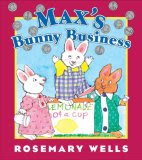
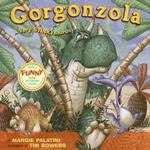
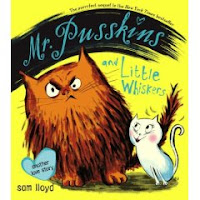
I seem to have been inundated with picture books for review over the past few weeks. Just like buses...you wait, and wait, and wait for one to arrive, and then as soon as you light a cigarette, three arrive at once. I don't actually smoke, but I have seen this theory in action, and it's true! Anyways, I've been fortunate enough to get some good ones in this recent batch and can proudly recommend:
Mr. Pusskins and Little Whiskers: another love story by Sam Lloyd
Gorgonzola: a Very Stinkysaurus by Margie Palatini and Tim Bowers, illus.
Max's Bunny Business by Rosemary Wells
There's always room for more in the Great Fictional Cats cannon (Rotten Ralph, Samson the Church Cat, Jenny Linsky, Henry the Siamese, Slinki Malinki--I could go on and on) so make space for Mr. Pusskins! His books beg the question "just where are the grown-ups?" but in the end, who cares? Mr. Pusskins is the star with Emily as his adoring friend. And now he has a new devotee, the mischievous kitten Little Whiskers.
Gorgonzola is the stinkiest dinosaur this side of the Mesozoic Era, but it's nothing a few well-placed words and a toothbrush can't fix. This "message" book about personal hygiene is funny and clever with fantastic cartoon illustrations and a few choice puns as well. Dinosaurs and B.O.--a great combination!
Max's Bunny Business is really here as an honorable mention, simply because it involves the venerable Max and Ruby who seem to have the same adventure over and over again: Ruby, industrious and focused, is sidetracked by Max, who just wants a set of vampire teeth/chocolate chicken/sparkle ring. Fortunately, they still amuse. And just who's side is Grandma on anyways? After all these years, I still can't tell.
All of these books are available May 2008.






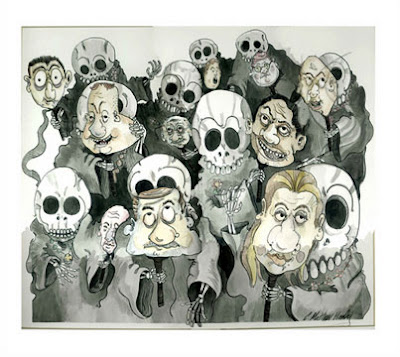
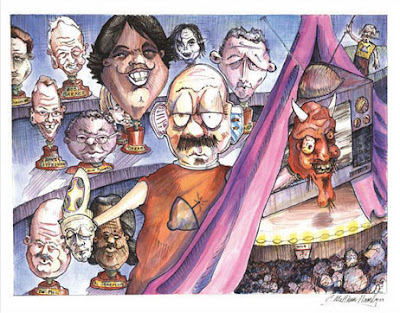
 Where do you do your best writing? In airports.
Where do you do your best writing? In airports.
